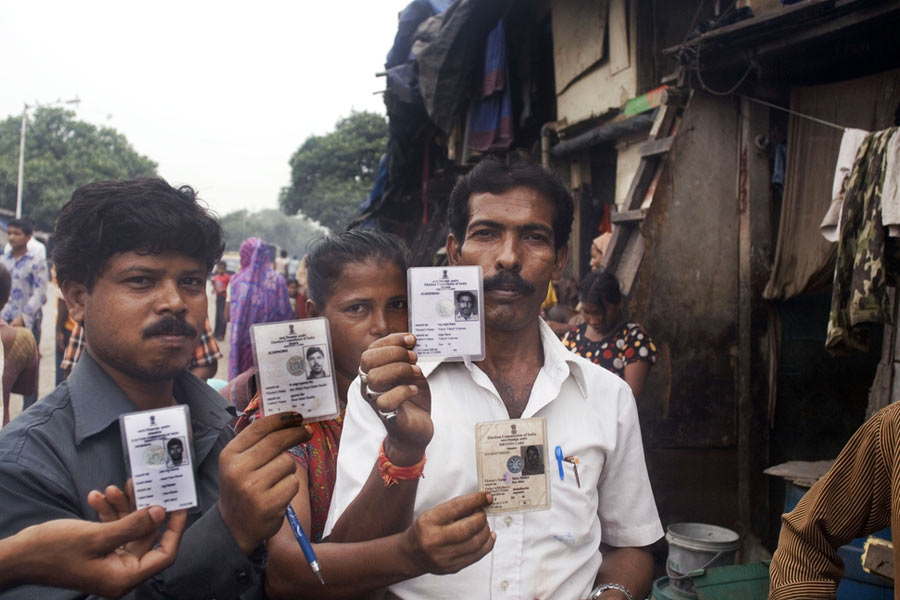First mooted in 1957, the Electors Photo Identity Card made its nationwide debut over three decades later in 1993 to prevent voter impersonation in elections.
What the Election Commission once thought was "not practicable to operate satisfactorily on a large scale", has become a mainstay in India's election system. The identity cards are now acceptable also as proof of identity and address.
A pilot project to issue photo identity cards for voters was undertaken in the Calcutta (South West) Parliamentary constituency for a by-election in May 1960, but it did not succeed and the project was shelved for almost two decades.
It was during the 1979 assembly elections in Sikkim that photo identity cards were issued and it was subsequently implemented in other northeastern states such as Assam, Meghalaya and Nagaland.
This was a precursor to the nationwide launch of Electors Photo Identity Cards in 1993.
According to the book "Leap of Faith" published by the Election Commission to document the journey of polls in India, the Representation of the People (Amendment) Bill, 1958, had an interesting provision of introducing photo identity cards.
India's first Chief Election Commissioner (CEC) Sukumar Sen, before his retirement, had the satisfaction of seeing the bill introduced in the Lower House of Parliament by his younger brother and then Union law minister Ashoke Kumar Sen on November 27, 1958.
The Bill was enacted into law on December 30, 1958, within days of K V K Sundaram becoming India's second CEC. Sundaram was also the longest-serving CEC, from December 20, 1958, to September 30, 1967.
In its report on the 1962 Lok Sabha polls, the poll panel said that soon after the general elections of 1957, it was suggested that issuance of identity cards with photographs attached to all electors in congested urban areas would greatly facilitate identification at the time of poll and avoid impersonation.
"The Election Commission tried it as an experimental measure in the Calcutta South-West Parliamentary constituency in which a by-election was then due. In spite of strenuous efforts spread over a period of 10 months, only 2.13 lakh electors out of a total of 3.42 lakh could be effectively photographed, and identity cards with photographs attached could thereafter be issued only to 2.10 lakh.
"Thus, three out of eight electors could not be provided with identity cards. The main reason for this was that an appreciable section of women electors refused to be photographed either by men or women photographers. A section of the voters could not be found," the report noted.
In the report on the 1962 General Elections, Sundaram recalled that the exercise had to be aborted after finding out that it would "not be practicable to operate the system satisfactorily" on a large scale, either in Kolkata or elsewhere in the country.
"The expenditure on the project for the Calcutta area alone would be of the order of Rs 25 lakh which would be an appreciable addition to the national expenditure on the conduct of elections.
"After a careful consideration of the machinery available to the commission for the purpose and after consulting the government, the EC came to the conclusion that it would not be practicable to operate the system satisfactorily on a large scale either in Calcutta or elsewhere in the country," he said.
It was in 1993 that the Electors Photo Identity Cards were finally introduced. The Election Commission in 2021 launched the Electronic Electoral Photo Identity Card (e-EPIC).
Electronic Electoral Photo Identity Card is a non-editable secure PDF version of the voter identity card and has a secure QR code with an image and demographics like serial number, part number and others. E-EPIC can be downloaded on a mobile or a computer and can be digitally stored.
India is gearing up for the next general elections to elect its 18th Lok Sabha, the schedule for which is likely to be announced soon.
Except for the headline, this story has not been edited by The Telegraph Online staff and has been published from a syndicated feed.










